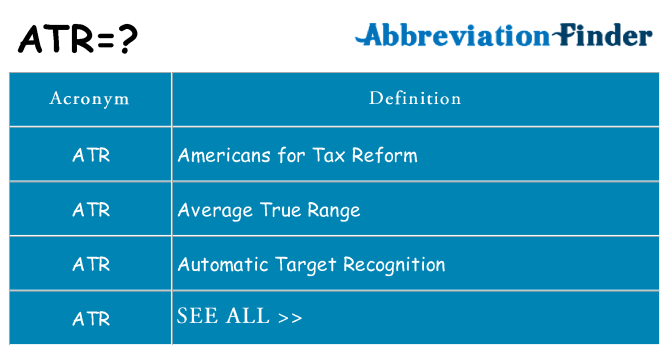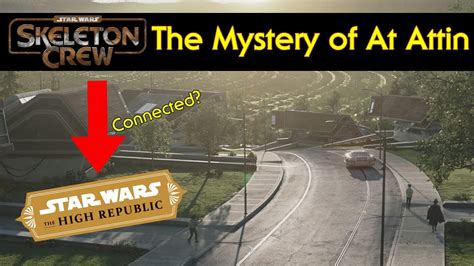Unraveling the ATR Mystery

The ATR, or Automatic Target Recognition, is a cutting-edge technology that has revolutionized various industries and applications. This powerful system has the ability to identify and classify objects automatically, making it an indispensable tool in numerous fields. In this comprehensive guide, we will delve into the world of ATR, exploring its inner workings, real-world applications, and the impact it has had on modern technology.
The Evolution of ATR

Automatic Target Recognition has come a long way since its inception. The concept of ATR can be traced back to the early days of radar technology, where the need for efficient target identification arose. Over the years, with advancements in computing power and artificial intelligence, ATR has evolved into a sophisticated system capable of remarkable feats.
The initial development of ATR focused on military applications, where accurate and rapid target identification was crucial for defense systems. However, as technology progressed, the potential of ATR expanded into civilian sectors, opening up a myriad of possibilities.
Key Milestones in ATR Evolution
One of the earliest milestones in ATR history was the implementation of image processing techniques in the 1970s. This allowed for the analysis of visual data, enabling ATR systems to identify targets based on their visual characteristics. The use of neural networks and machine learning algorithms in the 1980s further enhanced the capabilities of ATR, providing it with the ability to learn and adapt to new data.
The turn of the millennium saw a significant leap in ATR technology with the integration of advanced sensors and high-resolution imaging systems. These advancements enabled ATR to detect and recognize targets with unprecedented accuracy, even in challenging environments.
Understanding the ATR System

At its core, the ATR system is an intricate network of sensors, algorithms, and processing units working together to identify and classify targets. The system employs a combination of hardware and software components to achieve its goals.
Sensors and Data Acquisition
The first step in the ATR process is data acquisition. This involves the use of various sensors such as radar, lidar, and optical cameras to capture information about the surrounding environment. These sensors gather raw data, which serves as the foundation for ATR analysis.
| Sensor Type | Description |
|---|---|
| Radar | Emits radio waves and measures their reflections to detect and locate targets. |
| Lidar | Uses laser light to measure distances and create detailed 3D maps of the environment. |
| Optical Cameras | Captures visual data, providing high-resolution images for object recognition. |

Processing and Feature Extraction
Once the data is acquired, it undergoes a series of processing steps. The ATR system employs advanced algorithms to extract meaningful features from the raw data. These features can include shape, size, texture, and other distinctive characteristics of the target.
The extracted features are then fed into machine learning models, which have been trained on vast datasets. These models analyze the features and make predictions about the identity of the target. The ATR system's ability to learn and improve its accuracy over time is a testament to the power of machine learning.
Real-World Applications of ATR
The versatility of Automatic Target Recognition technology has led to its adoption across multiple industries. Its ability to accurately identify and classify objects has proven invaluable in various sectors, transforming the way we approach tasks and challenges.
Defense and Security
ATR has its roots in the defense industry, and its impact in this sector is profound. Military forces utilize ATR systems to detect and identify potential threats, such as enemy aircraft, missiles, and ground targets. The real-time analysis provided by ATR enables quick decision-making, enhancing the effectiveness of defense strategies.
In addition, ATR plays a crucial role in security applications. Surveillance systems equipped with ATR technology can monitor vast areas, automatically identifying and tracking potential intruders or suspicious activities. This enhances the security of critical infrastructure, borders, and sensitive areas.
Autonomous Vehicles
The rise of autonomous vehicles has been made possible, in part, by the integration of ATR technology. Self-driving cars, drones, and robotic systems rely on ATR to perceive and understand their surroundings. ATR systems enable these vehicles to identify and avoid obstacles, recognize traffic signs and signals, and make informed decisions while navigating complex environments.
| ATR Application | Autonomous Vehicle Type |
|---|---|
| Obstacle Detection and Avoidance | Self-driving cars, delivery drones |
| Traffic Sign Recognition | Autonomous trucks, robotic taxis |
| Pedestrian and Cyclist Detection | Passenger drones, personal robots |
Healthcare and Medical Imaging
ATR technology has found its way into the healthcare industry, revolutionizing medical imaging and diagnosis. In radiology and pathology, ATR systems can analyze medical images, such as X-rays, MRIs, and CT scans, to automatically detect and classify anomalies. This assists healthcare professionals in making accurate and timely diagnoses, leading to improved patient outcomes.
Agriculture and Precision Farming
The agricultural sector has also benefited from ATR technology. Precision farming techniques utilize ATR systems to identify and monitor crop health, detect pests and diseases, and optimize irrigation and fertilizer application. This data-driven approach to farming increases yield, reduces resource wastage, and enhances sustainability.
The Future of ATR: Possibilities and Challenges
As we look ahead, the future of Automatic Target Recognition holds immense potential. With ongoing research and development, ATR is poised to become even more accurate, efficient, and adaptable.
Advancements in Sensor Technology
The development of advanced sensors, such as quantum radar and high-resolution hyperspectral imaging systems, will further enhance the capabilities of ATR. These sensors will provide ATR systems with even more detailed and precise data, allowing for improved target recognition and classification.
Ethical Considerations and Privacy Concerns
With the increasing integration of ATR technology into our daily lives, ethical considerations and privacy concerns come to the forefront. As ATR systems become more powerful and ubiquitous, ensuring the responsible use of this technology and safeguarding individual privacy becomes crucial.
Developers and policymakers must work together to establish guidelines and regulations that strike a balance between the benefits of ATR and the protection of personal data and privacy rights.
Expanding Applications and Global Impact
The impact of ATR is not limited to a few industries. As the technology matures, we can expect to see its adoption across a wider range of sectors, including smart cities, environmental monitoring, and disaster management. ATR’s ability to process vast amounts of data and make real-time decisions will be invaluable in addressing global challenges and improving the efficiency of various processes.
Conclusion

Automatic Target Recognition has emerged as a game-changer, transforming the way we perceive and interact with the world. Its applications are vast and its impact profound. From defense and security to healthcare and agriculture, ATR has proven its worth and continues to evolve, pushing the boundaries of what is possible.
As we embrace the future, ATR technology will undoubtedly play a pivotal role in shaping our world, offering new opportunities and solutions to complex problems. The possibilities are endless, and the future of ATR is indeed exciting.
How does ATR technology improve defense strategies?
+ATR technology enhances defense strategies by providing real-time target identification and classification. This enables military forces to make informed decisions quickly, improving their response time and effectiveness against potential threats.
What are the key challenges in developing ATR systems for autonomous vehicles?
+The key challenges include ensuring reliable and accurate object detection and classification in diverse and dynamic environments. Additionally, developing robust algorithms that can handle large amounts of data and make split-second decisions is crucial for the safe operation of autonomous vehicles.
How does ATR contribute to precision farming practices?
+ATR technology assists in precision farming by providing data-driven insights into crop health, pest detection, and resource management. By analyzing imagery and sensor data, ATR systems enable farmers to make informed decisions, optimize their farming practices, and increase overall yield.



